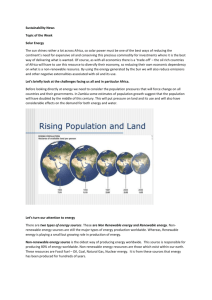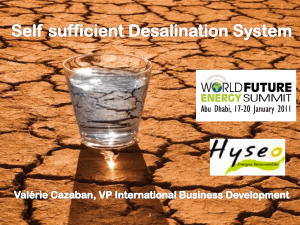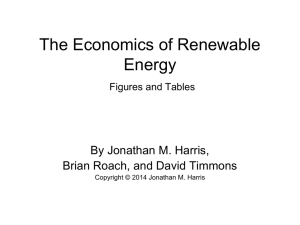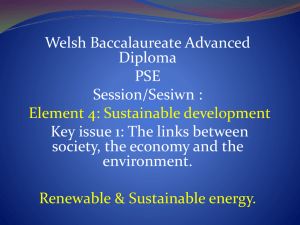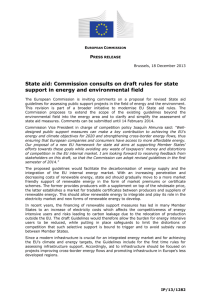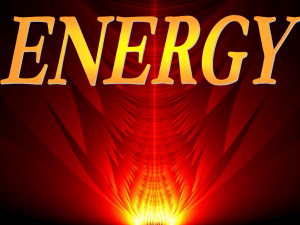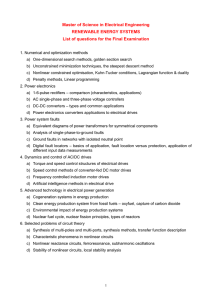Tele-Operated Robotic Hand using Data Glove
advertisement
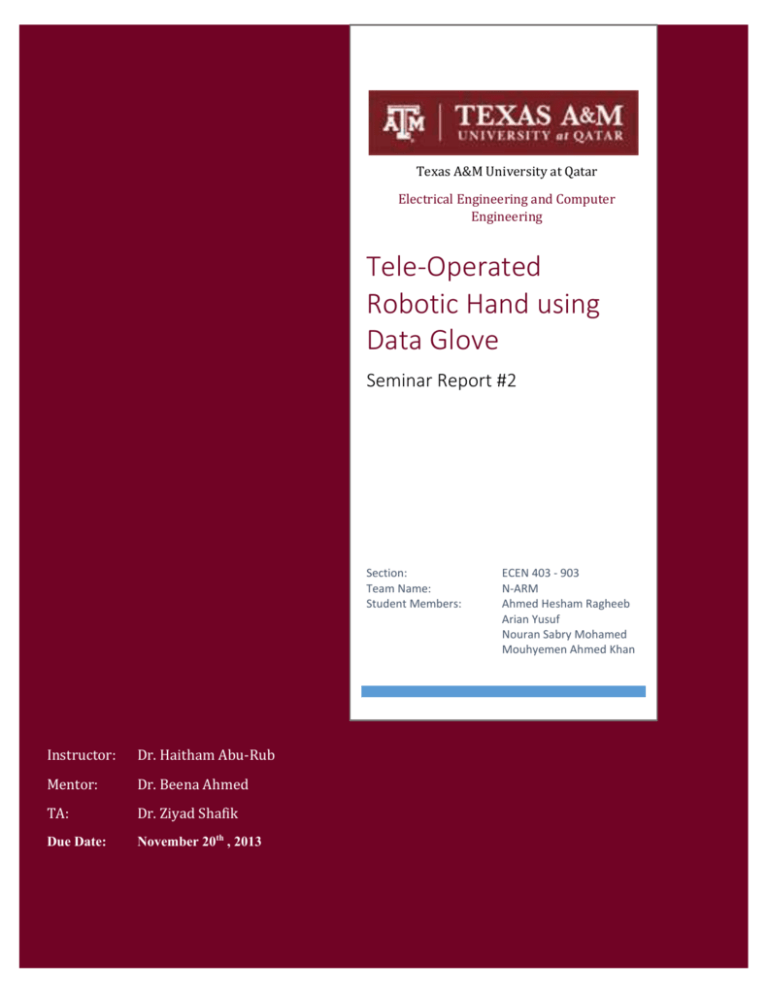
Texas A&M University at Qatar Electrical Engineering and Computer Engineering ECEN 403 Tele-Operated Robotic Hand using Data Glove Seminar Report #2 Section: Team Name: Student Members: Instructor: Dr. Haitham Abu-Rub Mentor: Dr. Beena Ahmed TA: Dr. Ziyad Shafik Due Date: November 20th , 2013 ECEN 403 - 903 N-ARM Ahmed Hesham Ragheeb Arian Yusuf Nouran Sabry Mohamed Mouhyemen Ahmed Khan “An Aggie does not lie, cheat or steal, or tolerate those who do.” The presentation covered two broad topics in the session which are renewable energy resources and standards and regulations dealing with photovoltaic energy sources. This report will attempt to summarize the two presentations in a general abstract form. Renewable Energy Sources Renewable energy sources are energy sources that can be continually replenished through the cyclic behavior of nature. Some of the renewable energy sources are extracted directly from the sun, wind, water, geothermal and tidal energy. The need to invest time and money on renewable energy sources by shifting from non-renewable energy sources is very important for the world. Non-renewable energy sources do not replenish as quickly as they are consumed and an extended dependence on them can be fatal to the world. The energy demands of the world cannot be met by non-renewable energy sources in the long run since they will eventually run out. An example of non-renewable energy source are fossil fuels. There are many advantages that renewable energy sources have over non-renewable energy sources. Firstly, renewable sources are clean sources of energy that produce very little or no global warming emissions. Global warming is the phenomenon where the average temperature of the oceans and atmosphere increases primarily caused by the consumption of fossil fuels as energy sources. Global warming is detrimental to the world since the melting caps around the world will increase the water level in the oceans and drawn many islands. Using renewable sources provides a safer and better alternative solution to the problem of global warming. Another advantage renewable sources have is the supply availability. They replenish at a faster rate and also have a very long supply rate compared to non-renewable sources. The solar energy is one of the most effective forms of renewable energy sources and is an everlasting energy source for the purposes of the world’s demands. If the solar energy is effectively used, then there will be zero greenhouse gas emissions, the new industry will create many jobs and economic opportunities for the world. There are many ways to bring about the shift from non-renewable energy sources to renewable energy sources. Some of the methods that can be implemented are by using bikes instead of mechanical vehicles. Using public transportation system instead of private vehicles is better if usage of bikes cannot serve the means. Plantation of trees across many regions is a great way of serving to the road of entering renewable energy sources. Page | 1 The presentation on renewable energy sources was followed by a brief explanation on the standards and regulations of energy systems connected to the electric grid. The importance of solar energy was described and then the merits of photovoltaic (PV) cells in using solar energy for energy demands. The presentation was concluded with a brief overview on different IEEE standards that govern the transmission and distribution of power using PV panels. Standards & Regulations governing PV Systems to Electric Grid Solar energy is a vast free energy source that we experience in our everyday lives that scientists and researchers have been trying to exploit for many decades. Regions such as the Middle-East can exploit this energy resource very effectively, especially Qatar since it receives one of the highest solar electromagnetic radiation per unit area in the world. The technology used in harnessing and effectively using this renewable energy source is through photovoltaic (PV) cells. PV cells do not require high maintenance cost and are very clean. However, they need high initial investment costs and the efficiency is low. Also, the output power varies depending on the variation in radiance and temperature. Photovoltaic cells convert light energy into electrical energy through the photovoltaic effect. Through continual development in photovoltaic technology have increased the capture of solar radiation. There are also many other benefits of this technology such as only initial investment, virtually very little maintenance and no transmission cost. The electric grid requires sinusoidal AC voltage having steady voltage and frequency while PV cells provide DC voltage and current. Hence, there are inverters in the transforming DC in the system to AC in the grid. The output solar power is connected to the load by a DC-DC converter. Depending on the application type, the output power can either remain as DC or be converted to AC again and then transferred. Another component in the solar energy system is the battery. Since the sun’s radiation cannot be extracted during night time, the battery serves as a storage container during night time. There is another important application of the battery in the system and that is to remove fuzzy effects coming from the variations of the sun’s radiations. As mentioned earlier, the output power of from PV cells depends on the variation of temperature and radiance. This effect necessitates one to understand the Maximum Power Point curve. The non-linear characteristics of the MPPT curve helps one to calculate the maximum power for a particular voltage value. Finally the presentation touched on IEEE standards such as 1547-2003, IEEE 929-200 etc. which are essential for transmission and distribution of power using PV systems. These technical standards also specify standards for abnormal voltages & frequencies. Page | 2
